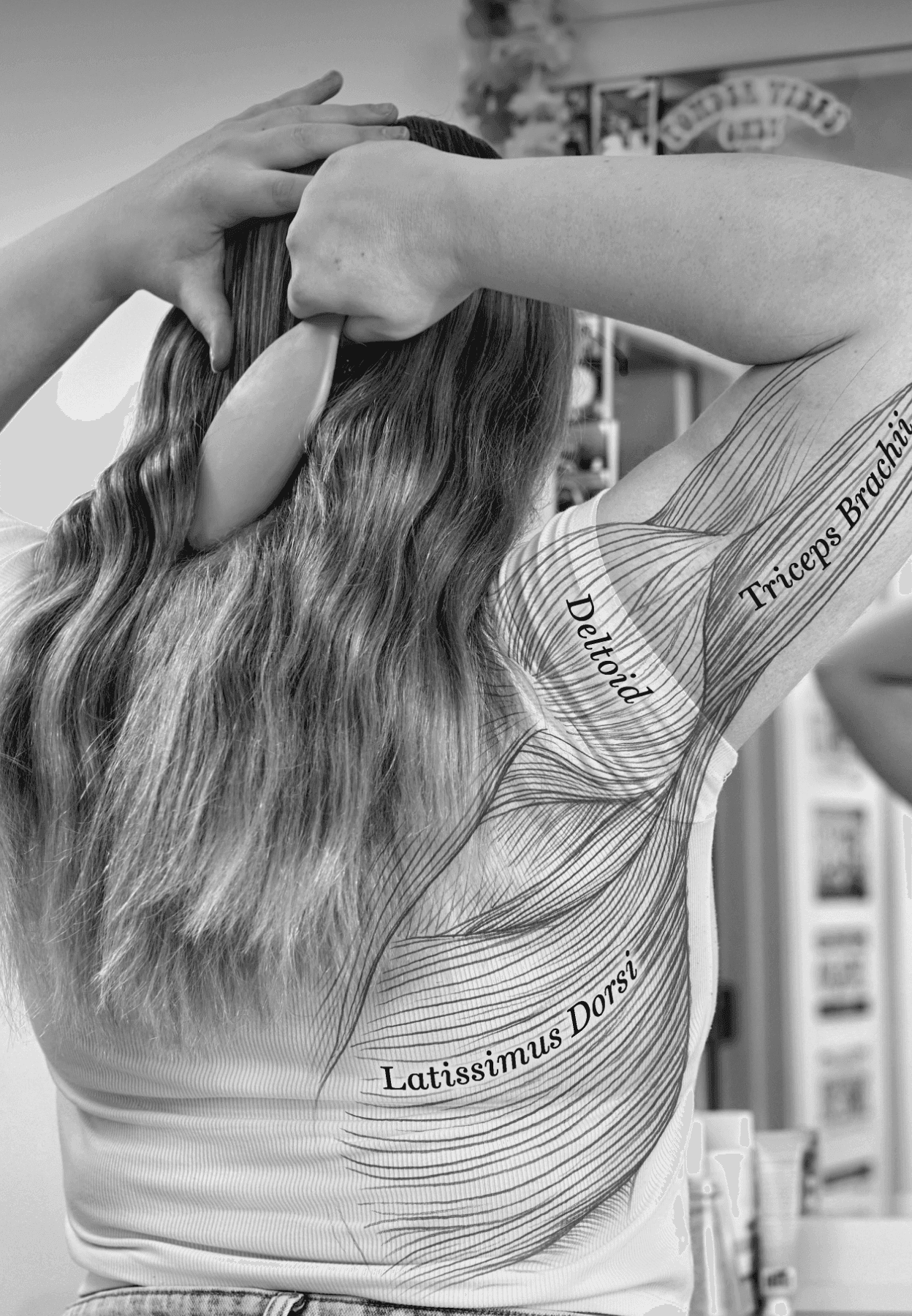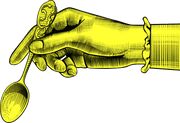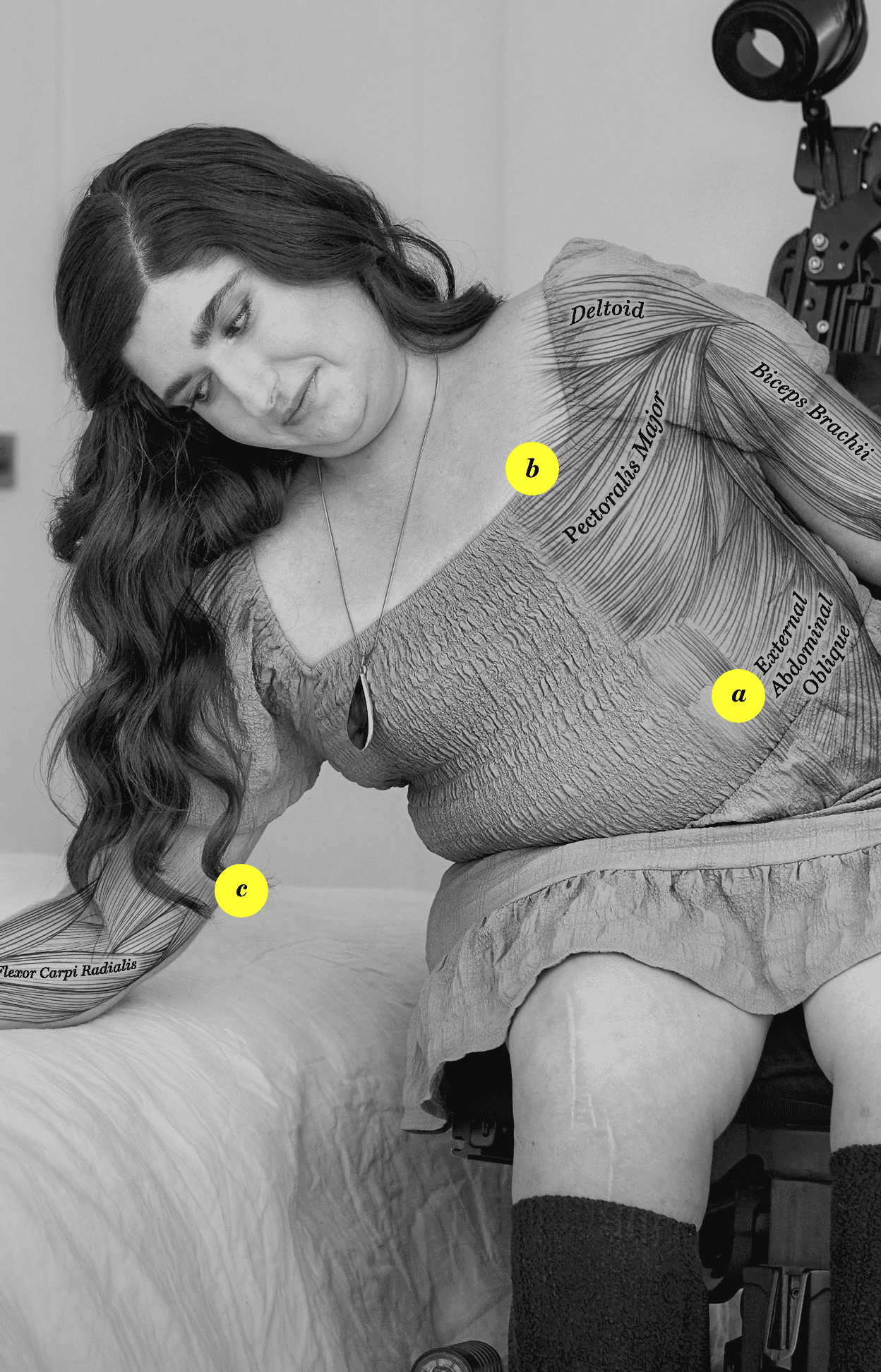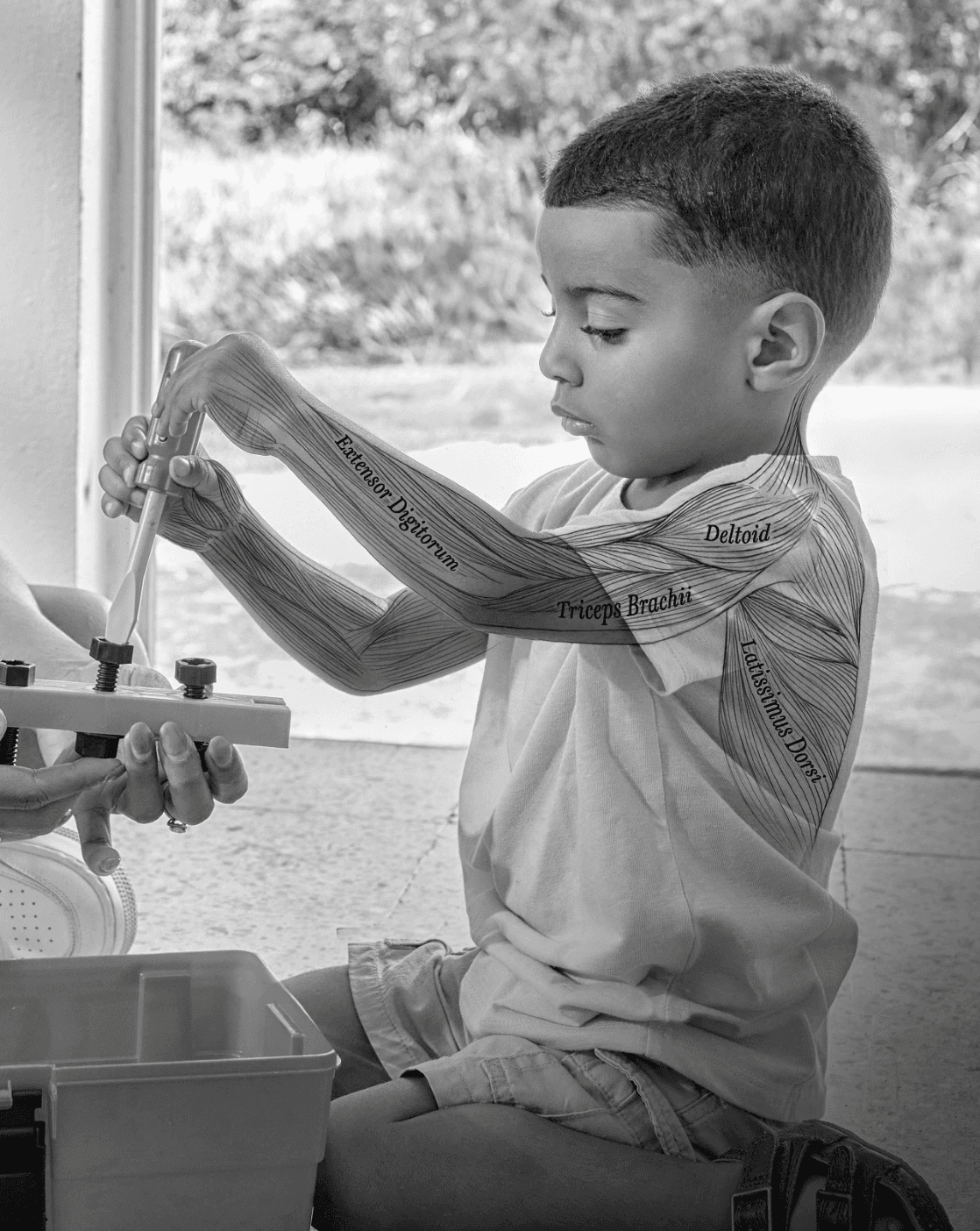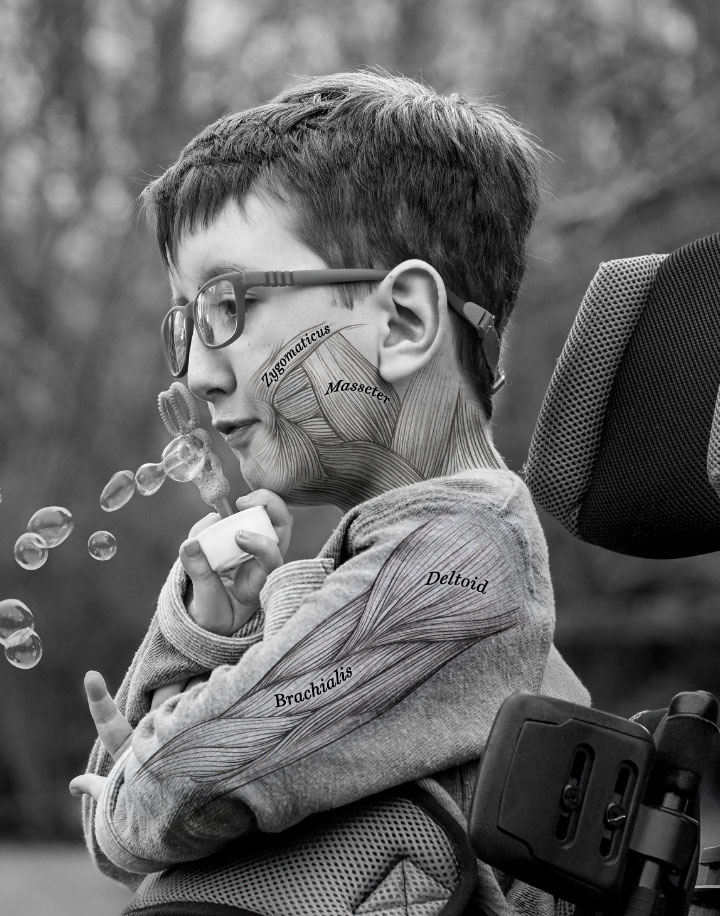
Bear, 10
Living with SMA
On an approved SMN-targeted treatment for 9 years
Lifetakesmuscle
STOP SMA FROM DOING THE SAME
In each of us, there’s an intricate system of over 600 individual muscles that work together to power almost everything we do, from breathing, to sitting upright, to even blowing bubbles. Muscles impact all of our daily activities. Spinal muscular atrophy (SMA) is a progressive disease in which muscles become weaker over time. SMA can prevent people living with the disease from achieving functional independence. To help slow that progression, those living with SMA need to preserve and strengthen their muscles.
See how muscle matters to people living with SMA
emphasizing muscle in SMA
By definition, SMA is a neuromuscular disease that results in a loss of both nerve cells and muscle. Recent treatments have made great strides in treating people living with SMA, leading to improvements in survival and measurements of motor function. However, preserving motor function and improving muscle strength over time still present challenges.
Breaking Down the Unmet Need
| Progressive: | when something develops over time |
| Muscle: | body tissues that enable physical movement and support many vital functions, like breathing, swallowing, and speaking |
| Weakness: | a lack of strength that prevents people from achieving functional improvement, and makes it difficult for them to sustain their current level of function |
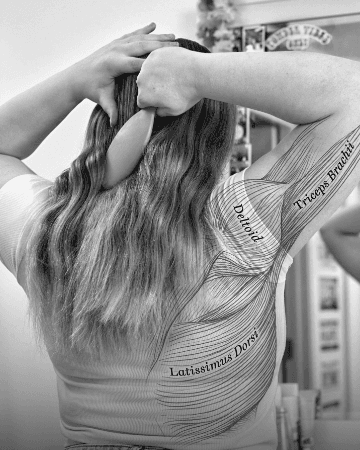
Mckenna, 16
Living with SMA
On an approved SMN-targeted
treatment for 8 years


Progressive muscle weakness remains a significant challenge in SMA.
People living with SMA are advocating for this unmet need to be addressed.
MAINTAINING MUSCLE IS IMPORTANT
Approved SMN-targeted treatments focus on motor neuron loss, but the role of muscle can’t be overlooked.
Did you know?
There are multiple kinds of muscles:

Smooth muscles control involuntary functions such as digestion and blood circulation

Cardiac muscles control the rhythmic contractions that pump blood throughout the body

Skeletal muscles are attached to bones throughout the body, enabling voluntary movements
SMA primarily impacts voluntary functions controlled by skeletal muscles—which includes almost any movement we make, and even some essential physiological functions many people take for granted, like breathing.
Muscles are controlled by motor neuron signals, which start in your brain and move through the spinal cord to reach your muscles.
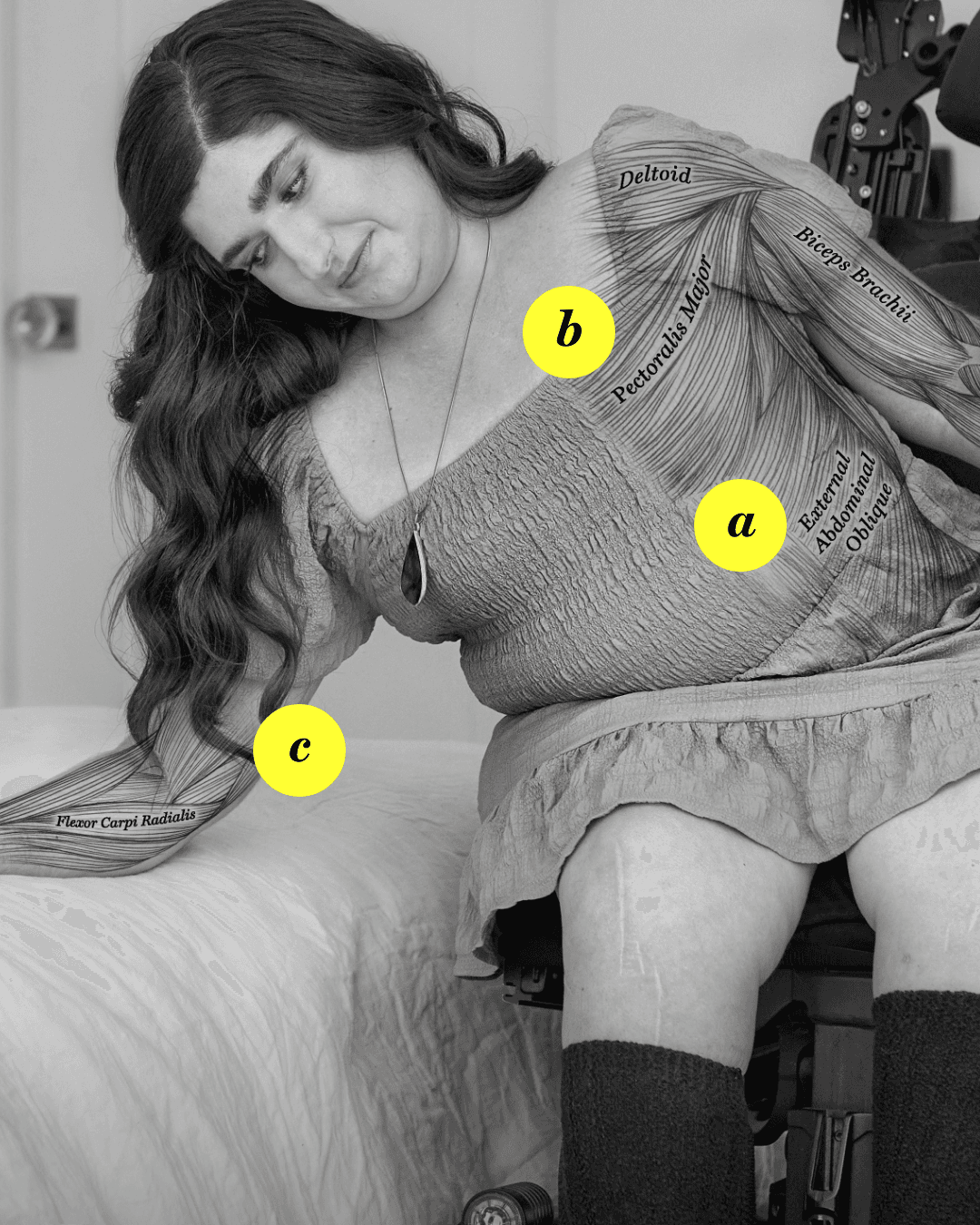
Lyza, 23
Living with SMA
On an approved SMN-targeted
treatment for 8 years
Lyza transferring from her chair to her bed
Movement and many vital functions depend on the motor unit
And every motor unit consists of a motor neuron to send a signal, and a muscle to receive it.
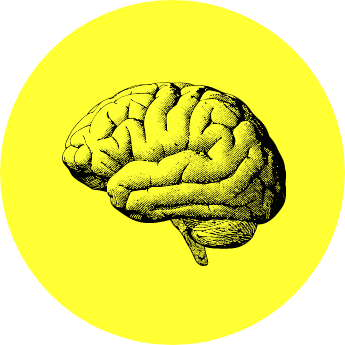

People living with SMA lose function when muscle atrophy (loss of muscle mass) weakens the ability of muscle to respond to motor neuron signaling. The whole motor unit becomes less effective.
But not all muscle is lost—some healthy muscle remains. So, there’s still opportunity to preserve and strengthen muscles that are partly or completely healthy.
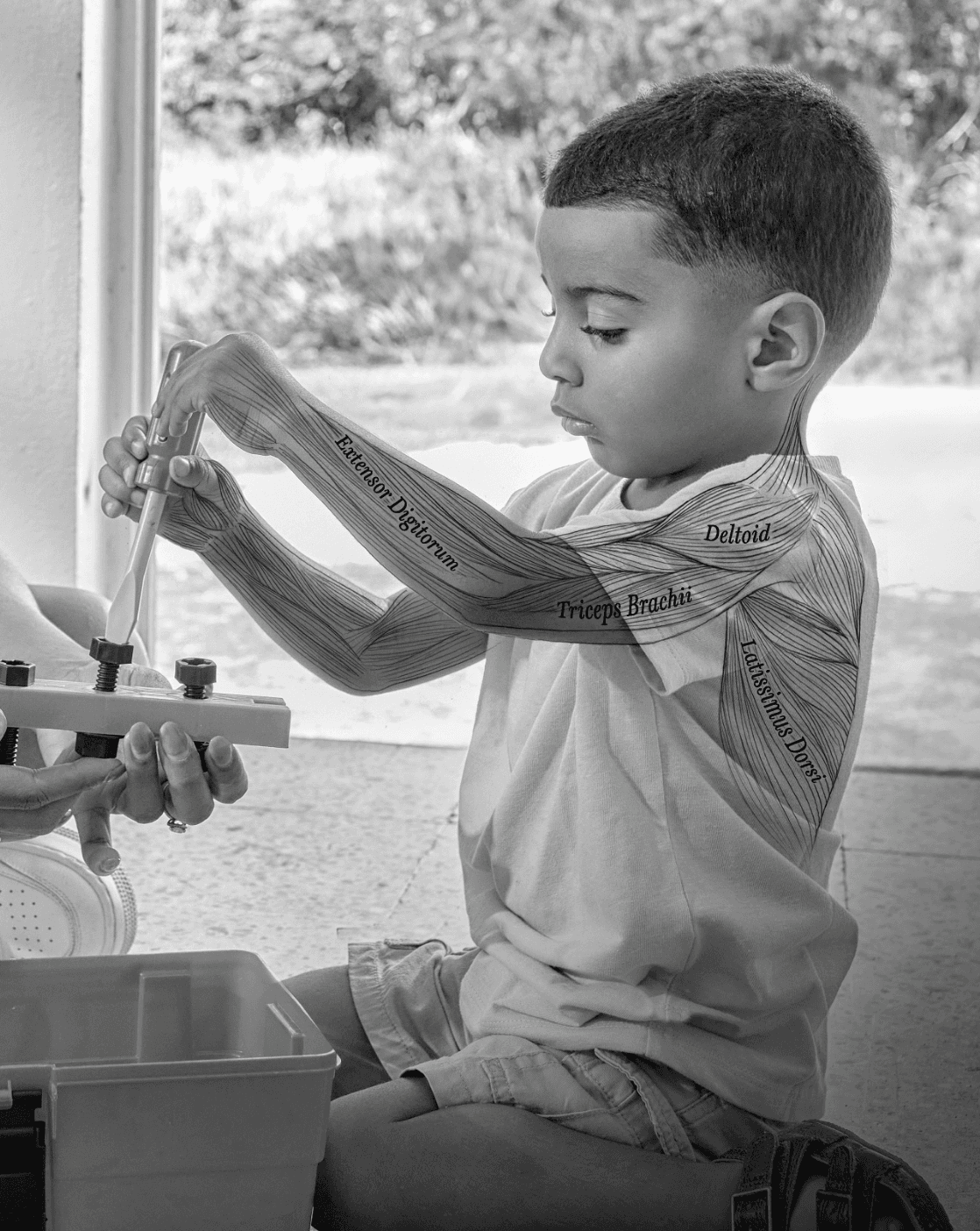
Jeybriel, 3
Living with SMA
On an approved SMN-targeted
treatment for 1 year
How daily life takes muscle
Muscles enable us to do things like brush our teeth, lift a glass, or turn pages in a book—the little things that are often called “activities of daily living” that can help foster independence.
They enable us to function in ways that are important to our social and emotional well-being. And muscles are important to many essential physiological functions we may take for granted, like breathing, eating, and speaking.
Muscles are central to our everyday lives
Click to reveal what it takes to perform these functions
chair transfers
12 muscles working together
breathing
52 muscles working together
chewing & swallowing
54 muscles working together
smiling
9 muscles working together
maintaining head posture
16 muscles working together
raising your hand in class
4 muscles working together
“Muscle is everything. I want to live knowing that I have the strength to take care of myself if left alone.”
-Lyza, living with SMA

QUICK POLL
What unmet needs do you hope to be able to address?
Select all that apply*
*This survey is for informational purposes only. Results are based on responses of site visitors, are not for research purposes, will be anonymized, and will not be published.
HOW FATIGUE can be FELT IN SMA
For people living with SMA, fatigue is a part of everyday life. But this is not just any fatigue. The words “tired” and “exhausted” are often used to describe a feeling of weakening muscle and loss of ability and function throughout the day. It impacts everything from chewing and swallowing to movement in the arms and legs. Fatigue even affects the ability to maintain focus for an extended time.
Fatigue is one of the most debilitating and under-addressed aspects of SMA—in fact, in one survey, 71% of people living with SMA said reducing fatigue was one of the most significant unmet needs that they hoped a new therapy would address.*
*Data from the 2024 Cure SMA Community Update Survey.
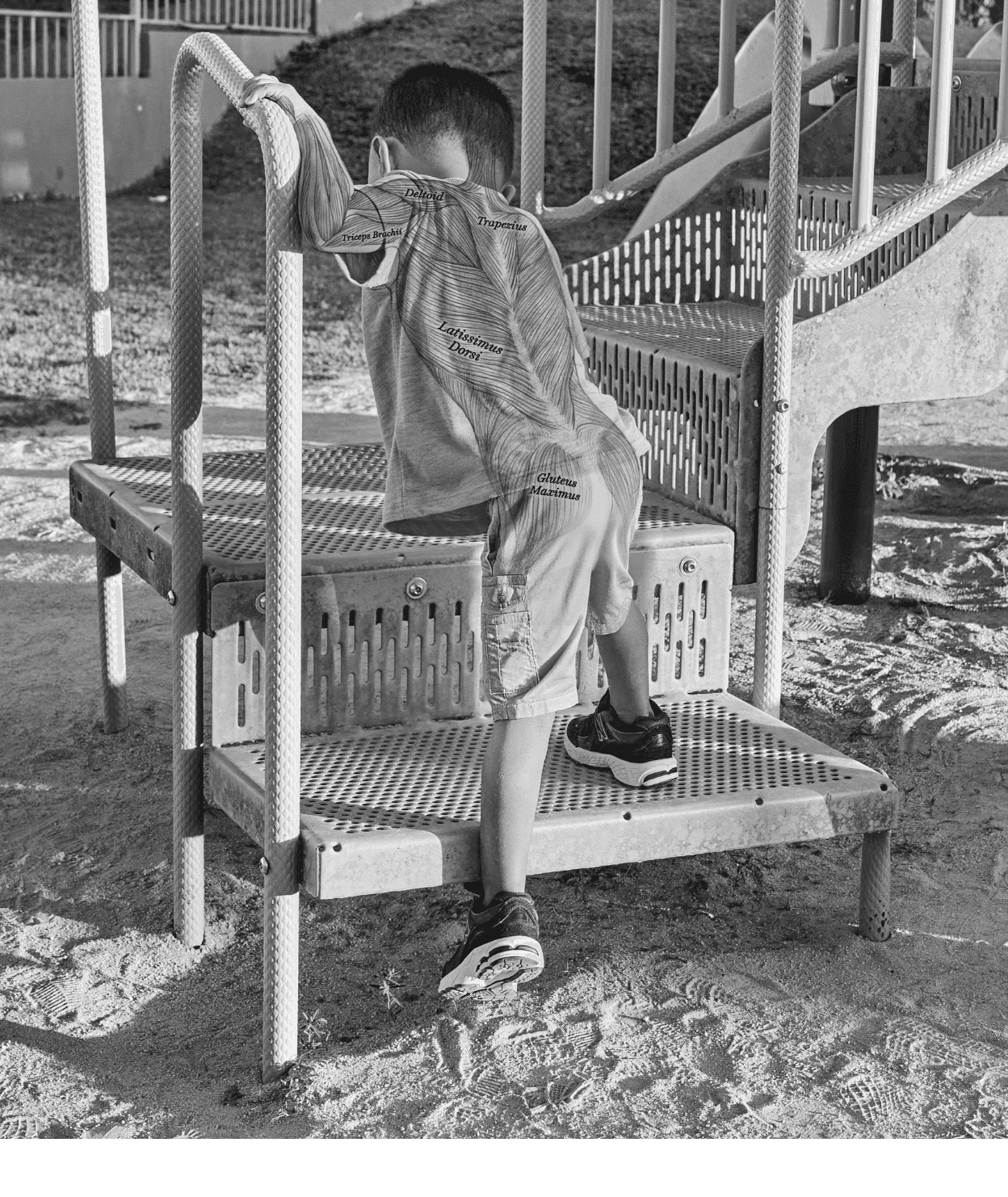
Working Around Limitations
Because progressive muscle weakness and fatigue are so common and have such an impact on daily life, many people with SMA develop their own adaptations or workarounds.
Workarounds generally fall into two categories:
Physical workarounds:
Assists from an outside force (a device, object, or even gravity) to complete a physically challenging task. For example, calling on stronger muscles to compensate for weakened ones, like using your arms to place your legs in a car, is a physical workaround.
Behavioral workarounds:
Strategies that you use to outsmart fatiguing activities. That could mean planning ahead—like drinking less water to avoid the need to go to the bathroom—or choosing between activities in order to conserve energy, or even avoiding an activity or task entirely.
See how people living with SMA are finding ways to work around fatigue
Watch now ►“i have some workarounds so i can try to live a daily life, a normal life.”
-Mckenna, living with SMA


Muscle strength is important for achieving physical therapy goals, such as improving function, reducing fatigue, and preventing worsening scoliosis or hip dislocation.

Mckenna, 16
Mckenna practices lifting and flexing her foot on a balance beam to strengthen her muscles so she can independently drive a car someday
A strong case for strengthening muscle
A current muscle-focused approach that you’re probably familiar with is physical therapy (PT). Both walkers and wheelchair users can use PT to encourage muscle activation, which may improve strength, endurance, and activities of everyday life. The focus areas of PT, including appropriate exercises, stretching, joint mobilization, and assistive devices, can all help preserve range of motion, promote muscle strength, and support a broader treatment plan.
Finding the right interventions to manage muscle weakness can have a real impact on daily life. But more can be done, and therapeutic options that focus on muscle are an area of scientific exploration.
See how one prominent physical therapist is emphasizing muscle
Watch now ►the FUTURE
of sma
Uncover a shift in the way members of the community are thinking about SMA and what they might be hoping for.
take me thereGet the e‑newsletter
Hear more about the SMA community’s evolving goals, and the need to preserve and strengthen muscle.
sign up
